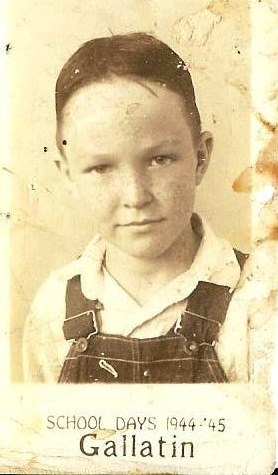Old Photos from Gallatin School and State Historical Marker
By Deborah Burkett
It was a joyous occasion with plenty of food and lots of memories to share when a huge crowd gathered in the community of Gallatin, Cherokee County Texas, on Sunday, May 29, for two special events. Former students returned to Gallatin for a school reunion and a state historical marker was dedicated for Gallatin ISD, the first consolidated school in Cherokee County from 1903 to 1959. As the Class of 1959 graduated, Gallatin voted to consolidate with Rusk.
At the marker ceremony, Amy Derrington welcomed everyone and introduced special guests. The program for the marker dedication highlighted some of the history of Gallatin and its early school. George Washington Davis, settled in the area of Piney Grove, and many families followed. The town of Gallatin had begun. It wasn't until 1902 that Gallatin was platted as a town by surveyor C. H. Martin. The town site was owned by John W. Chandler and his sister, Miss Sophie Chandler. The Texas & New Orleans Railroad later came to town. Gallatin was second only to Jacksonville as the largest tomato shipping point in the country.
As with each state historical marker in Cherokee County, the Cherokee County Historical Commission (CCHC) along with the Texas Historical Commission (THC) co-sponsored the event. Deborah Burkett, chair of the CCHC spoke on the importance of preservation.
Burkett shared the following information taken from the Texas Historical Commission website, "Quote--The Importance of Preservation has been discussed, defined and plans put into action for generations. The State of Texas first commemorated and preserved a historical site in 1856 by contributing money to mark graves at the San Jacinto battleground. The Texas State Historical Survey Committee (later the THC) was created in 1953, and in the 1950s and 1960s placed pink granite monuments and grave markers across Texas. The current Official Texas Historical Marker program dates to 1962 and it has been a popular means for interpreting local and state history for more than five decades. There are now more than 16,000 state historical markers in Texas.
Types of markers include building markers, subject markers, grave markers, medallions, private state-approved markers. The historical markers are erected to mark archeological finds; mountain passes; old trails; Indian camp and burial grounds; sites of battles and skirmishes; sites related to important events in cattle, agricultural, and petroleum industries; unique weather sites; early railroads; famous gunfights; early business and birthplaces or homes of outstanding Texans. The markers give important information on the history of towns large and small as well as towns that no longer exist--close Quote."
Burkett continued, "State historical markers also recognize schools of the past---such as the one we honoring today. Amy Derrington and many of you here have worked diligently to preserve the history of this school in Gallatin before it was too late. Describing the need for preservation Thomas Jefferson once wrote---"Let us save what remains" and that's what you've done in Gallatin. You've saved what remains of the stories, photos of the school and You've submitted the required application and the Texas Historical Commission agreed with you-this school and its importance to the community and county is worthy of a state marker.
As I've mentioned, Preserving Texas history has been deemed important since the early days of the Republic---everyone here today in Gallatin---is committed to continuing that tradition as this year we celebrate 180th Anniversary of Texas independence.
Old photos and school records paint a picture of another time. Help us preserve and identify these students seen in the 1930s and '40s school photos-there are a total of 75 such photos we're trying to identify. And in closing I want to say---"Let's keep the reunions going!"



